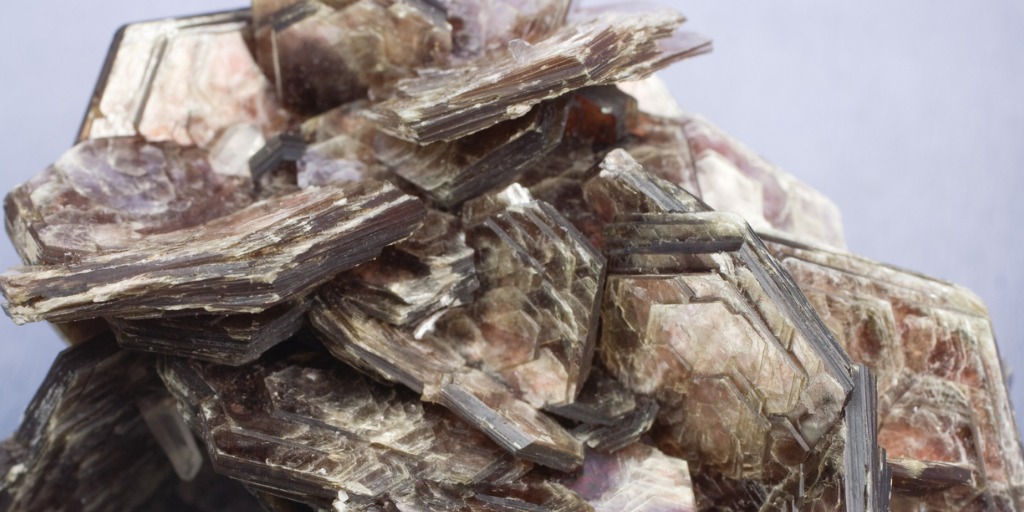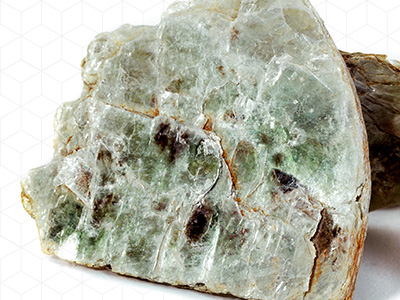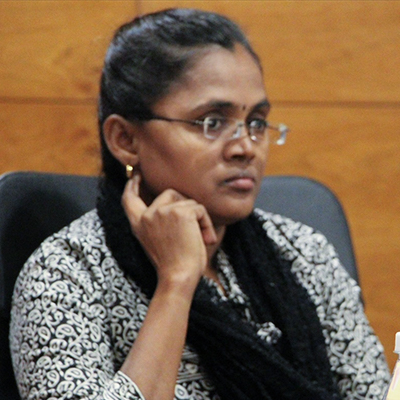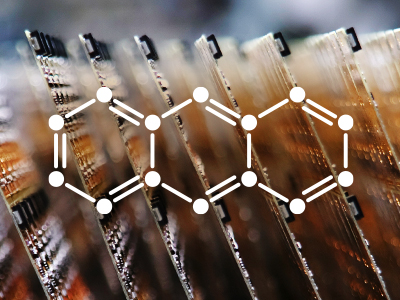Mica is a group of silicate minerals whose individual crystals can easily be split into extremely thin elastic plates. Mica is a critical raw material for electronics, transportation, and cosmetics, yet the mica supply chain often starts with artisanal mines. This unregulated mining carries significant risks for workers such as unsafe working conditions, child labor, and trafficking.
Uses of Mica
Major uses of sheet and block mica are as electrical insulators in electronic equipment, thermal insulation, gauge “glass”, windows in stove and kerosene heaters, dielectrics in capacitors, decorative panels in lamps and windows, insulation in electric motors and generator armatures, and field coil insulation. Today it is used in everything from electrical products to cosmetics.
Histroy and Background
Mica mining started within the Brandywine Valley in Delaware, USA in the mid-1700s. In the 1800s, mica was used mainly for stove windows, and as shades for open-flame lights. Sheet mica was first used in vacuum tubes in 1904. With the outbreak of World War I, the demand for vacuum tubes and other electronic components grew, and large quantities of mica were essential for the war effort.
Sheet mica is found in many countries. It has been produced in the United States, Canada, Brazil, Argentina, German East Africa, Transvaal, British Nyassaland, Natal, Madagascar, India, Ceylon, Australia, China, and Japan.

Mica Mining and Mica Production
India has the largest reserve of mica in the world and is one of the leading producers and exporters of mica in the world. It is mainly produced in Andhra Pradesh, Bihar, Jharkhand, Maharashtra, and Rajasthan.
The largest mica producer in the world in 2021 was China, producing an estimated 95,000 metric tons of mica. Following China was Finland, which produced 65,000 metric tons that year.
The global mica market was valued at USD 453.6 million in 2020 and it is expected to reach USD 554.6 million by the end of 2027, growing at a CAGR of 2.9% during 2021-2027.
Human Rights Issues in Mica Production
In two major mica-producing countries, India and Madagascar, mica supply chains rely heavily on artisanal and small-scale extraction as well as manual processing. Reports in recent years have highlighted instances of child labor, illegal operations, and unsafe health and safety conditions in mica production and processing.
Mining mica is a labor-intensive process that requires going into narrow shafts that frequently collapse and trap children under the rocks. To find mica, children are forced to go underground, where they often find themselves in complete darkness.
Environmental and Health Concerns
The creation of open pits to obtain mica encourages soil erosion and the formation of sinkholes, and could potentially pollute waterways and soil.
Long-term inhalation of mica dust may cause lung scarring which leads to symptoms such as coughing, shortness of breath, weakness, and weight loss. Depending on the extraction method, mica can sometimes become contaminated with asbestos, which is a well-known carcinogen.
The Responsible Mica Initiative (RMI)
The Responsible Mica Initiative (not to be confused with the Responsible Mineral Initiative below) is a non-governmental organization created in January 2017 to build a sustainable mica supply chain in India by promoting responsible sourcing practices and eradicating child labor and unacceptable working conditions. RMI members are drawn from industries associated with the mica supply chain in partnership with non-governmental organizations and associations.
The Responsible Mica Initiative has more than 80 members drawn from a cross-section of industries that produce or use mica as well as industry associations and civil society and non-governmental organizations.
Mica Reporting Tempalte (MRT)
The Responsible Minerals Initiative launched a free standardized template known as the Mica Reporting Template (MRT) version 1.0 on October 28, 2020, to identify choke points and collect due diligence information in the mica supply chain.
Extended Minerals Reporting Tempalte (EMRT):
In a recent announcement, the Responsible Minerals Initiative announced its intention to phase out the Cobalt Reporting Template (CRT) and Mica Reporting Template (MRT) by the end of March 2022. As an alternative to using the respective templates for the various minerals included within the software, the Responsible Minerals Initiative released the new template called Extended Minerals Reporting Template (EMRT) on October 20, 2021. The EMRT is a free reporting template to identify issues and gather due diligence information for cobalt and mica supply chains. The CRT and MRT webpages will be offline after March 31, 2022, and these templates will no longer be available to the public.
Timeline of Extended Minerals Reporting Template releases:
- EMRT v_1.0 released on October 20, 2021
- EMRT v_1.01 released on November 23, 2021
- EMRT v_1.02 released on December 23, 2021
Responsible Procurement of Mica
Manufacturers of cobalt and mica must fill these mineral templates to show that the materials are sourced ethically and responsibly. Any original equipment manufacturer (OEM) or producer may check these reports to know they are not breaking any compliance regulations. While there are currently no legal requirements regarding cobalt and mica sourcing, many manufacturers voluntarily use the EMRT to build a sustainable responsible minerals program. Some companies have made cobalt and mica due diligence a contractual supplier requirement.
How Companies Can Maintain Compliance
Manufacturers, suppliers, and companies involved in the supply chains are required to have a policy or program in place to ensure all cobalt and mica utilized is ethically sourced. Below are several ways in which companies can remain compliant:
- Install companywide programs and procedures supporting the Responsible Minerals Initiative to eradicate armed conflict, violence, and human rights violations.
- Map mineral supply chains and minerals sources utilizing cobalt smelter databases, mica smelter databases, and the Responsible Minerals Assurance Program (RMAP) to identify smelters or refiners (SORs) as conformant to the OECD Due Diligence Guidance for Responsible Supply Chains of Minerals from CAHRA’s.
- Require suppliers to have a policy or program in place to ensure all cobalt and mica utilized is ethically sourced, conflict-free, and reported to stakeholders within the EMRT.
- Continuously improving cobalt and mica sourcing decisions and communicating with stakeholders concerning cobalt and mica supply chain changes that need attention.
- Taking corrective actions to ensure ethical sourcing and conflict-free cobalt and mica supply chains.
Not meeting responsible minerals guidelines creates several risks:
- Economic loss — loss of investors or contracts
- Reputational damage — negative public relations around extended minerals in your products
- Supply chain issues — delays in material sourcing due to supply chain disruptions
Compliance Resources from the Responsible Minerals Initiative
The Responsible Minerals Initiative (RMI; not to be confused with the Responsible Mica Initiative above) works to provide tools, resources, and partnerships necessary for downstream companies to carry out their due diligence in accordance with the OECD Guidance. The RMI coordinates supply chain research by member companies to increase the understanding of the applications of mica in electronics and automotive products.
The RMI has added mica to the Risk Readiness Assessment (RRA), enabling members to invite mica suppliers to the platform to complete the self-assessment against the industry norms covering social, environmental, and governance issue areas.
Below are some other ways in which the RMI supports compliance with ethical sourcing policies and guidelines:
- Developed and maintains the Extended Minerals Reporting Template (EMRT).
- Issued the Global Workplace Responsible Sourcing, Environmental, Health & Safety Due Diligence Standard for Mica Processors.
- The RMI’s Responsible Minerals Assurance Process (RMAP) provides independent third-party assessments for mica processors.
- Works collaboratively with stakeholders such as the Responsible Mica Initiative to further transparency and responsible mica production and sourcing practices.
- Signed a Memorandum of Understanding (MOU) with the Responsible Mica Initiative to develop a joint program to audit Mica processors.
Risk Readiness Assessment (RRA)
The Risk Readiness Assessment (RRA) is a voluntary self-assessment and self-reporting tool for minerals and metals producers and processors to communicate their environmental, social, and governance practices and performance. Its main objective is to promote a common understanding of good practices and a means to consistently assess risks and actions to manage risks in the mineral supply chain.
Assessing and managing social and environmental risks in mineral extraction and processing remains a challenge for downstream companies due to the size and complexity of international supply chains. In addition to the difficulty of reaching suppliers beyond the first-tier supply chain levels, companies are confronted with a highly fragmented landscape of standards, initiatives, and certifications related to responsible mining and minerals processing. Existing standards may focus on different issues and define varying performance and implementation requirements. Furthermore, standards cover different raw materials as well as types of mining operations.
What Should Companies Do?
For downstream companies:
- Compare the sustainability practices, standards, and third-party assurance schemes used by businesses in your supply chain relatively and against the normative benchmark.
- Identify what materials and geographies are applicable to the various standards.
- Engage suppliers beyond the first supply chain tier levels, raise awareness of and encourage the adoption of progressive risk management practices.
For minerals and metals producers and processors:
- Communicate risk management practices and performance to downstream customers.
- Compare risk management practices and performance against a benchmark based on existing best-in-class standards.
For Industries:
- Facilitate better understanding of sustainability practices among businesses at different points in the supply chain and encourage dialogue to achieve greater sustainability impacts.
- Encourage harmonization, equivalencies, and cross-recognition of standards between voluntary initiatives, leveraging comparative strengths and avoiding “audit fatigue” where possible.
- Identify the best-in-class practices among businesses in the mining, minerals, and metals supply chain and thereby inspire a “race to the top” for sustainable business performance.
Conclusion
Mica is used principally in the electronic and electrical industries and its usefulness in these applications is derived from its unique electrical, thermal, and mechanical properties. The increased presence of cobalt and mica in supply chains means companies must be aware of how these materials are produced and sourced. To keep up with the market’s growing environmental, social, and governance (ESG) expectations, manufacturers must complete extensive due diligence for cobalt and mica.





